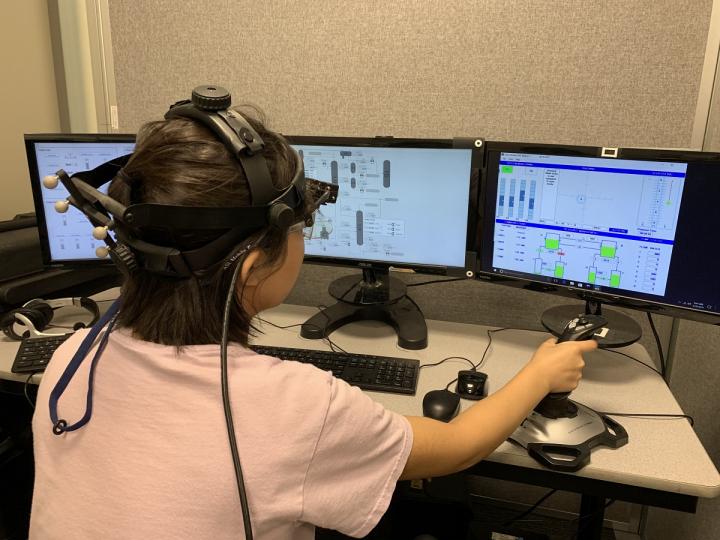
Studying an employee’s eye movement can provide valuable insight into how well they understand their current situation, according to a recent study published in the International Journal of Industrial Ergonomics.
Researchers at the University of Missouri measured situation awareness by using the success rate of self-terminating visual search (STVS) in a multitasking supervisory control environment.
“An employee with poor situational awareness will miss some critical things that happen in their work area,” said Jung Hyup Kim, an assistant professor of industrial and manufacturing systems engineering in the MU College of Engineering.
“If I am tired, burdened by other things, or my workload is beyond what I can handle, my awareness will go down, and there is no way to measure that in real-time.”
The team created a simulated multitasking environment of an oil refinery control room.
In the study, participants were tasked with monitoring different gauges and other controls on a computer screen, while also responding to unexpected events, such as alarms.
The team found that there is a relationship between self-terminating visual search and situational awareness level. Put simply, participants that were quick in locating the area of an alert had a better understanding of what happened during the experiment than those who spent more time searching.
“We found a relationship between situational awareness and self-terminating visual search — or once you find a solution, you end the search,” Kim said.
“So, if a person has a good understanding about the situation, then they can directly target the cause of the problem in a short amount of time. But if they do not have good awareness, then they may spend a long time searching randomly for the cause.”
According to MU College of Engineering, the team wants to take this research and develop it into a method through which supervisors can “monitor situational awareness in real time in the hopes of limiting potentially catastrophic mistakes.”
“If you work at a job for a long time, you probably understand what you need to do,” Kim said. “But how well do you understand the status and dynamics of the current situation, right now? You will be able to assess the operator’s situational awareness in real time.”
Journal Citation
“Assessing situation awareness in multitasking supervisory control using success rate of self-terminating search”
Xiaonan Yang, Jung Hyup Kim
International Journal of Industrial Ergonomics
Volume 72, July 2019, Pages 354-362
https://doi.org/10.1016/j.ergon.2019.06.015
